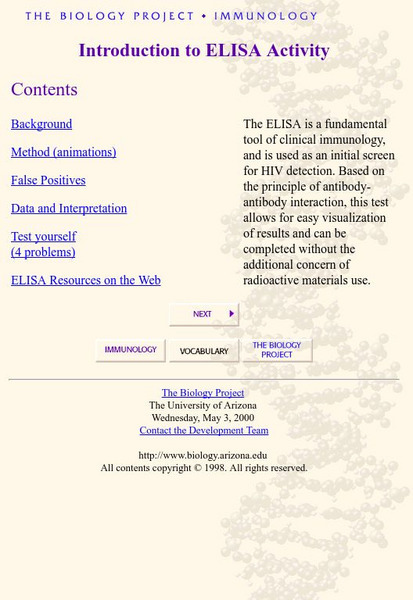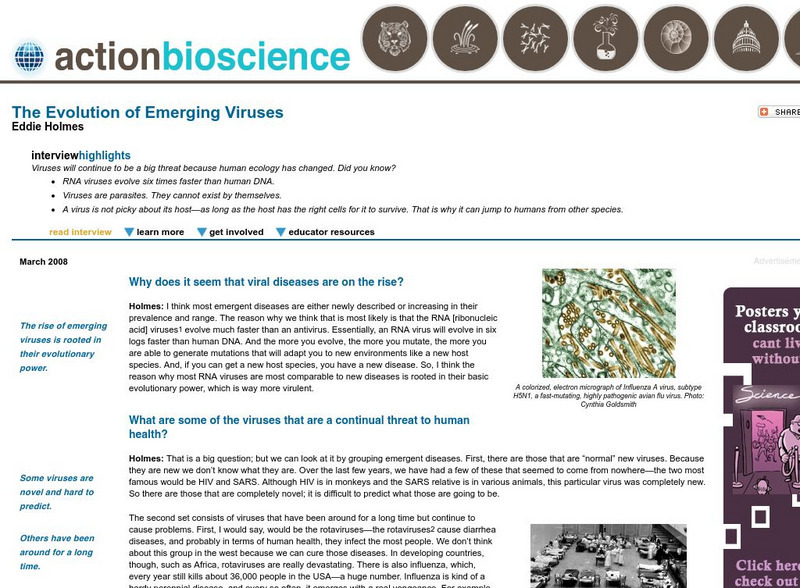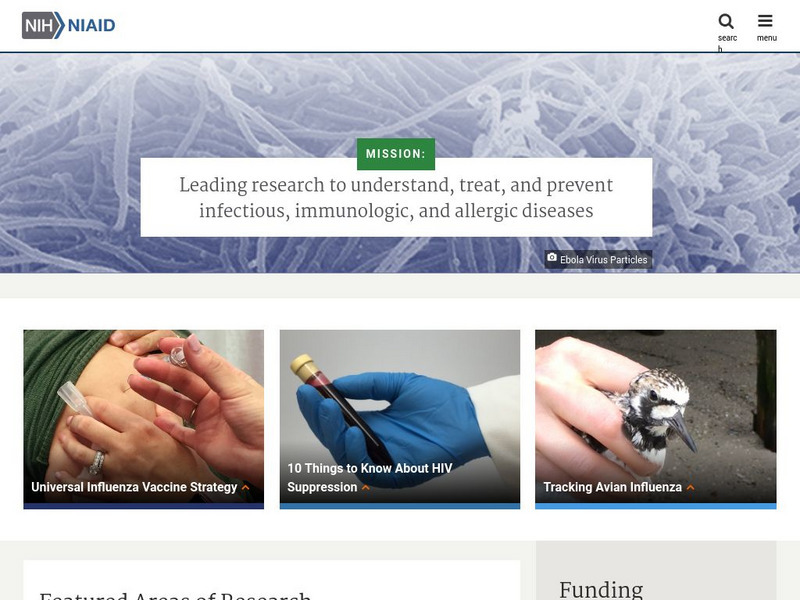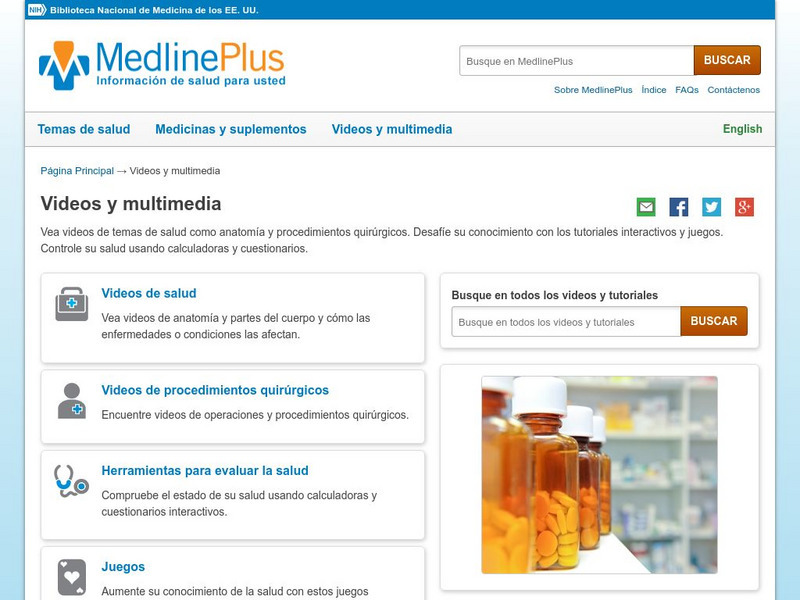Curated OER
Risk Behavior: HIV/AIDS
Bring to life the health risks of unsafe sex and drug use. Participants are involved in a simulation they don't understand until the end. One pupil is "in the know", secretly playing the role of being HIV-positive. Everyone else...
Curated OER
Who's at Risk?
Students are asked what do they comprehend about HIV, such as: how does it get transmitted, and what happens to the body once someone contracts the virus. They discuss ways that people can avoid getting and spreading AIDS. Students...
Curated OER
Relationships and Reproduction Unit
Students explore what ways the choices you make today determine your future health and well being. They can earn up to a maximum 65 points in the layer C-Layer. Students complete one of the activities in Layer B to earn a maximum of 15...
Curated OER
AIDS, HIV, & Other Microbe Matters
Students conduct inquiry-based research for basic information about microbes, infections, and HIV, the virus that causes AIDS. After gathering answers to their questions, students develop a presentation to post on their school's Web site.
Curated OER
Gazing Into the Faces of AIDS
Students consider whether or not there are generalizations that can be made about people who are infected with H.I.V. or who have the AIDS virus. They create public service ad campaigns to educate the public and consider other ways to...
Curated OER
Opportunistic Diseases
Young scholars explore the concept of opportunistic diseases. In this opportunistic diseases lesson, students take notes on a lecture regarding systemic herpes, candidiasis, cytomegalovirus, tuberculosis, MAC, recurrent pneumonia,...
Curated OER
HIV/AIDS And How It Affects My Community
Students create a slide presentation about HIV/AIDS. In this health lesson, students work in groups to take what they have learned about HIV and AIDS to make a presentation for the public.
Curated OER
What You See Isn't Always What You Get!
Pupils explore AIDS. In this health lesson, students participate in 2 classroom activities that reinforce the concept that HIV infection is not apparent in physical appearance. Pupils discuss the activities and write about their...
Curated OER
What is the Immune System and How Does HIV Affect It?
Student discuss the effect of HIV on the immune system. In this human body lesson, students research the immune system and how the HIV virus weakens it. They create a bulletin board showing how HIV is transmitted.
Curated OER
Worksheet 20
For this math worksheet, learners Investigate the structure and function of how the numbers of people infected with HIV changes over time. They answer the fact of it either increasing or decreasing.
Curated OER
Lesson Plan on HIV/AIDS
Students examine where, why, how and in what conditions HIV/AIDS exists. They examine the deadly impact this virus has had on the world and look at how to prevent the spread at home. The students also develop a greater awareness of the...
Curated OER
A Simulation of the Spread of HIV
Pupils participate in a simulation to illustrate the spread of HIV. They use phenolphthalein, water and test tubes to simulate the spread of the virus and discuss results and variables after the activity.
Curated OER
Protection and Compassion
Students investigate ways to protect themselves against AIDS while learning compassion for the those with the disease. For this HIV/AIDs lesson, students discuss ways to protect themselves against contacting the disease. Students discuss...
Curated OER
V/AIDS, Year 2, Day 2
Students examine and express personal feelings and opinions on relevant AIDS-related situations and listen to the opinions of peers. They practice decision-making and assertiveness. They watch a video on AIDS awareness.
Curated OER
HIV/AIDS, Year 2, Day 1
Students discover that HIV is a blood-borne virus which attacks to the body's immune system. They see the difference between being infected with HIV and being diagnosed with AIDS. They discuss which behaviors are safe and which are not.
Curated OER
HIV/AIDS: Understanding Risk Behaviors
Eighth graders recongize the difference between HIV and AIDS. They explore how one finds out they have the disease and their treatment options. They discuss risky and safe behaviors when dealing with HIV or AIDS.
University of Arizona
The Biology Project: Immunology: Hiv Simulation: Simulating the Spread of Hiv
This web-based simulation demonstrates potential spread of HIV through a population. Each participant exchanges virtual body fluids with other participants, some of whom are HIV positive. A computer-simulated ELISA will illustrate the...
University of Arizona
The Biology Project: Immunology: Introduction to Elisa Activity
Based on the principle of antibody-antibody interaction, this ELISA test for HIV detection allows for easy visualization of results and can be completed without the additional concern of radioactive materials use.
American Institute of Biological Sciences
Action Bioscience: The Evolution of Emerging Viruses
An explanation of viruses that includes the importance knowing the origins and the evolution of viruses.
National Institutes of Health
National Institute of Allergy and Infectious Diseases
Get the latest government information on HIV-AIDS, allergies, the development of vaccines, and other health-related research topics.
US National Library of Medicine
Medline Plus: Videos Y Multimedia
Online presentations on more than 150 health topics, diseases, and conditions, from acne to viruses. Each plays as a slide presentation, with sound, that you can control or set to autoplay. Time varies from 5-20 minutes. Available in...
University of Arizona
The Biology Project: Immunology: Hiv and Aids Tutorial
Read this illustrated tutorial about the relationship between the HIV virus and AIDS. Also contains treatment and diagnosis information.
EL Education
El Education: Diseased
This fictionalized journal was created by a high school student in Denver, Colorado. It tells the haunting story, through a combination of text and images, of a young woman who is stricken with tuberculosis (and later HIV). This...

























